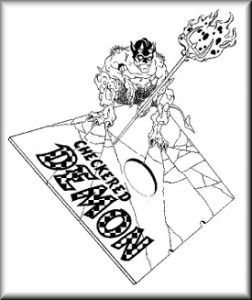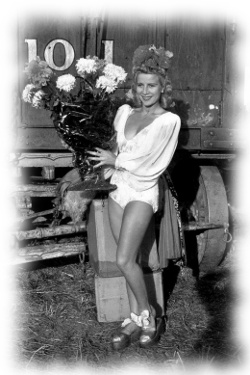
–== Summary ==–
Sermin’s Uncle Bobby asked if I knew anything about crowd sourcing (aka Kickstarter). After scripting what turned out to be a long reply I decided that I could turn it into a blog post. Here is a summary of what I feel makes a great crowd sourced RPG campaign. The focus is on what the campaign authors can do to make patrons happy campers. 😉
–== My Crowd Sourcing History ==–
As of October 9th, 2012 I have backed 46 projects through kickstarter.com ( John’s Kickstarter projects ) and 7 through indiegogo.com ( John’s IndieGoGo projects ). The first project I crowd sourced was back in October 2011 so I have been doing the crowd sourcing gig for about a year. By far the largest percentage of projects I have backed are in the RPG industry (81%). The others are books, comics, movies, or art related. I have never run a crowd funded project. (Note that I will use the term project and campaign interchangeably in this blog post.)
–== What Makes A Good Pitch ==–
There are several things that I think make a good crowd sourcing entry. These are in no particular order.
- The elevator pitch needs to be the first thing that the customer sees when they go to the page. The statement needs to be clear, concise, and right at the top of the entry.
- A very clear description of the project is helpful. Make sure to cover all of the questions most folks will ask so you don’t have to fill in gaps later. The description should also define why this project is different than others in the area. Why should I buy your RPG when I already own many others?
- Add brief resumes for the authors and artists. If there are key players from the industry involved in the project DEFINITELY highlight them. I will often pledge a project based solely on the authors. Monte Cook…ching ching…Steve Long…ching ching…you get the idea. 😉
- Be VERY clear on where you are in the campaign and how much is left to complete. Probably my #1 gripe as a crowd sourcing patron is when people give bad completion dates. Go WAY over on estimates if you are not sure.  One project I am a backer on is now 7 months late with an updated due date at the end of 2012. Yowser. L (FYI. Kickstarter allows each pledge level to have a different estimate. Use that if there will be a different delivery date for say a PDF and a print copy.)
- Details on why the funds are needed is really important. For an RPG book that might be needing money for an initial print run, artwork, or to hire a layout person. Be clear and honest.
- If the campaign uses Kickstarter be careful setting the top goal. If the goal is not reached then the entire project is not funded and patrons will be disappointed. Also a REALLY high goal can scare folks off. Set it carefully and justly.
- Defining the various pledge levels with their rewards is critical and should be carefully planned. Make sure these are very clear especially if they are additive. In the RPG space these are sometimes named to make this easier. For example, at Peasant Level you get your name in the book. At Serf level you get Peasant plus PDF. Etc. I believe you can tweak the main text only. Make sure the initial pledge levels are clear. Later on if you need to clarify them you can update the main body content.
- Make sure that the pledge amounts hit good breakpoints for the levels that you think will be the most common. In my simple example above maybe the PDF level is $15 and the print copy is $30 but you have other entries between and after. The key is the major breaks that will garner the most users. These need to not be set too high. If the first pledge level for a print copy is $95 it could put off patrons.
- Consider providing early adopter pledge levels. These can be provided in a limited numbers to heighten interest. This can sometimes sway my wallet if I know I can get extra goodies or a cheaper price if I pledge early. Surprisingly I read a long forum post where the user said they do not like early adopter pledge levels…I do not agree.
- You can get really creative with rewards at various levels. I have seen kickstarters with custom dice, signed editions, fancy cloth carriers, gaming bags, dice bags, t-shirts, posters, pins, custom artwork, coffee table art books, additional backer only content, mouse pads, donations to libraries, etc. Backer only content is a GREAT way to get some folks to pledge. 😉
- Details on stretch goals can be added after the project starts. You can tack them on to the end of the project pretty easily. On several projects where I am a member the details got so confusing that they ended up making clear pictures or bullet lists AFTER the project started to keep people from getting confused. Again using my example, Serf gives your name in the book, the PDF, and a postcard of one of the artwork pieces. Numenera is a good example of how this can happen. Note how Monte’s initial goal was $20,000 and is closed at $517,255. Not a typo. 😉
- Make sure the entry is attractive and VERY professional looking. This can really sway me to a higher pledge level. Check out Story Realms for a good example of a professional presentation.
- There is some contention over the importance of the associated video. I think it can make a difference in whether I would pledge AND the amount I want to pledge. Race To Adventure is one that springs to mind. This is a board game by the folks at Evil Hat. They even came out with a video that shows how to play the game before the end of the project. Awesome. 😀
–== IndieGoGo Versus Kickstarter ==–
As a patron there are some things to think about when investing in projects on IndieGoGo and Kickstarter. There are advantages and disadvantages to each that need to be considered.
- If you are an international patron then often you will only get to pledge projects on IndieGoGo. Kickstarter is working to broaden their scope but currently IndieGoGo is the only international vendor.
- One big difference in the two hosts that IndieGoGo funds are taken from your account immediately. As soon as you pledge the funds are taken. It does not matter if the stretch goal is reached your money is spent. One of the campaigns I have pledged is in this state and I don’t know if I will ever get the reward for my pledge. 🙁 Kickstarter does not collect funds unless the project is over AND the campaign goal was reached. If the campaign goal was not reached nothing is deducted. The moral of this story is to consider IndieGoGo patronage CAREFULLY.
- I have not experienced this yet but I have been told that IndieGoGo does not allow you to change your pledge level. If you want to move up to a higher pledge level or remove your pledge there is not an easy mechanism. Again…be careful pledging on IndieGoGo and you will be fine. 😉
–== What Do I Like To See As A Patron? ==–
This may sounds strange but I like seeing crowd sourced campaigns where I am a patron getting attention on the internet. It is always nice to hear a campaign pitched on podcasts, message boards, RSS feeds, newspapers, blogs, etc. Really push the project whenever possible. Be on the lookout for aggregator sites for related crowd source projects. For example, there are RSS feeds for RPG related crowd sourced projects. There are several RPG related podcasts that love to have guests pimp their campaigns. Search them out and make a guest appearance.
Finally remember that if someone supports your campaign they are giving monetary AND emotional support. That means you better treat them right! Don’t blow it! :D Patrons need updates with details on progress and any changes to the plan. Personally I like updates at LEAST every 2 weeks. After that I feel like I am not getting enough feedback. Updates that include even a tiny deliverable are wonderful. For example, one piece of artwork, a sample chapter, a detailed discussion of some rule, etc. Something from the product make me feel like progress is being made.
If you are a crowd sourcing junkie like me please comment and let me know if I missed something in this post.
GAME ON! 😀
 During the early 90’s I published a newsletter that I emailed out to anyone who would listen. At the time my audience was comprised primarily of gaming buddies and folks on the Checkered Demon BBS. Each issue is like a collection of mini blog posts. 😉
During the early 90’s I published a newsletter that I emailed out to anyone who would listen. At the time my audience was comprised primarily of gaming buddies and folks on the Checkered Demon BBS. Each issue is like a collection of mini blog posts. 😉




